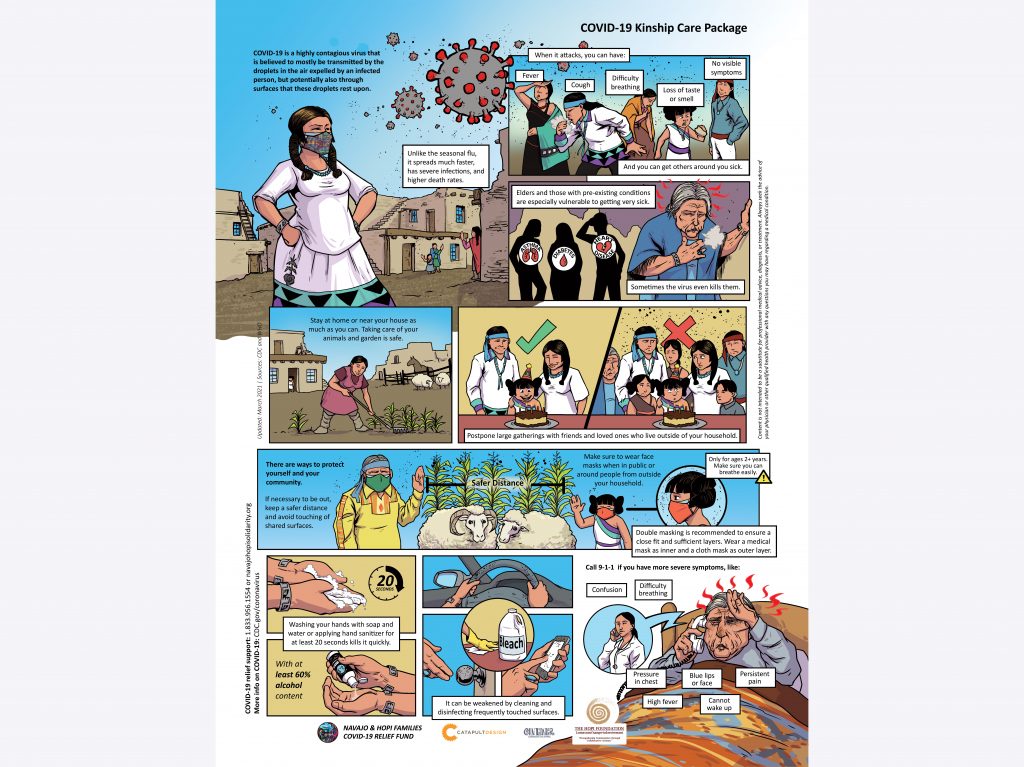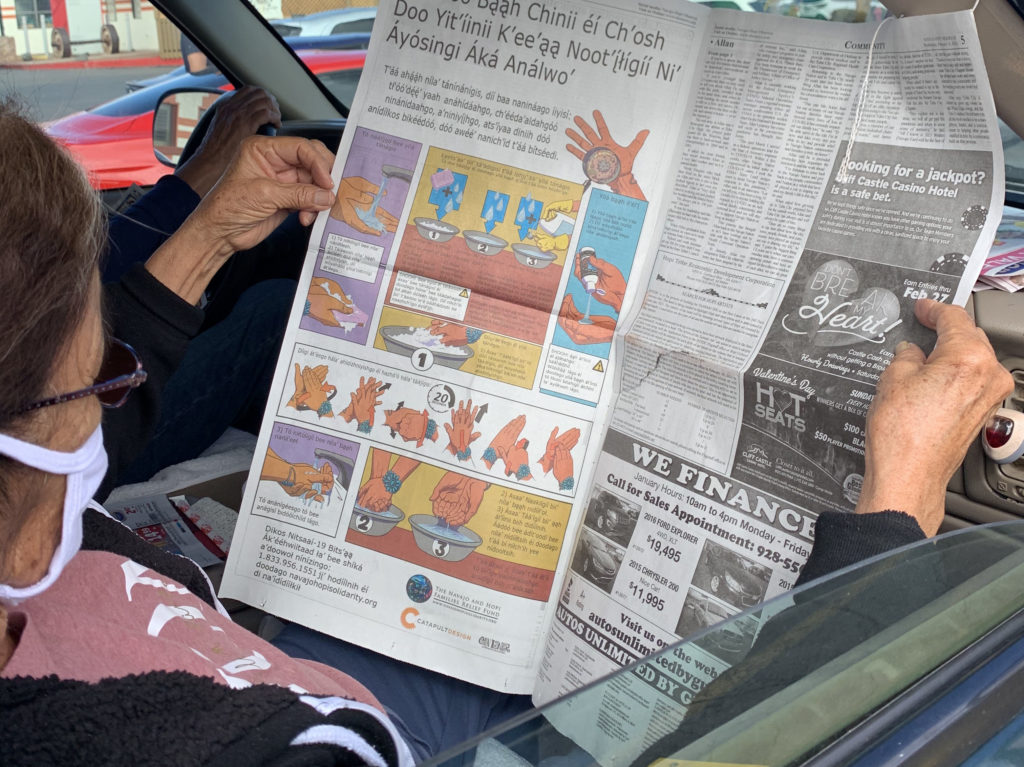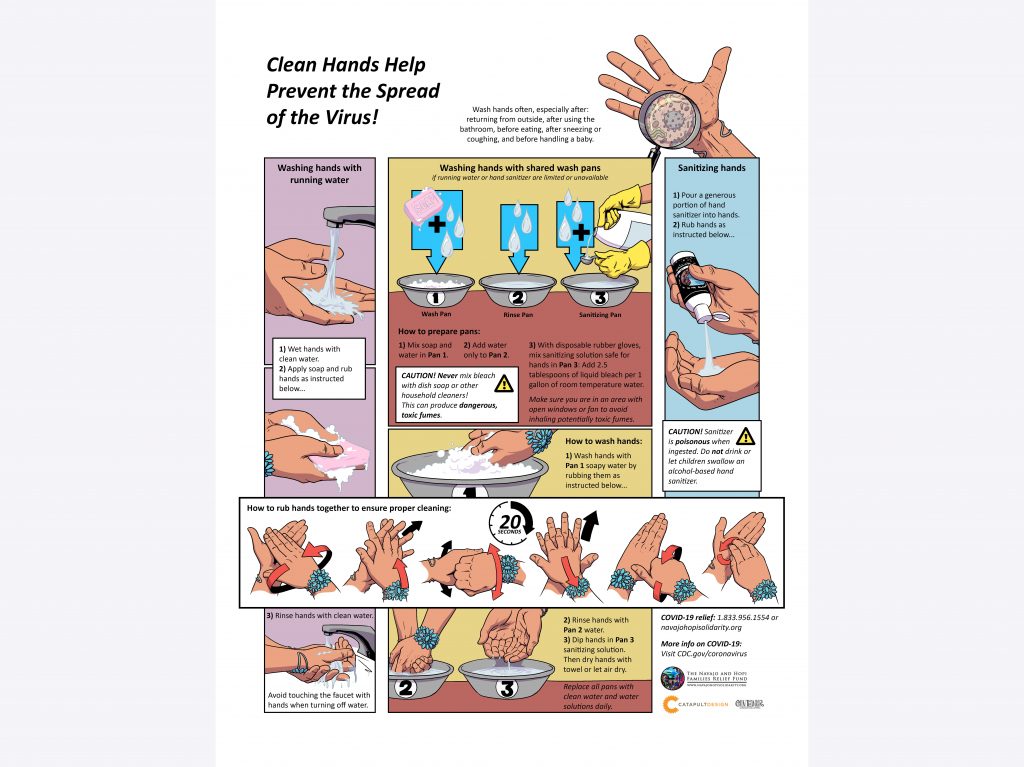Navajo And Hopi COVID-19 Crisis Design
Client/Funder:
Navajo & Hopi Families Covid-19 Relief Fund
Catapult Service Line:
Design
Thematic Area:
Global HealthWash
Challenge
Native Americans have been among those most vulnerable to the COVID-19 pandemic, owing to generations of inadequate healthcare, grinding poverty, and a chronic lack of safe drinking water and healthy food, among other essentials. Native people are also reported to have the highest rates of chronic disease in the U.S., including diabetes, heart disease, and lung disease. Those living on the Navajo Nation and Hopi Reservation are some of those most vulnerable.
According to a 2017 report by the Centers for Disease Control (CDC), Native peoples have the lowest life expectancy of any U.S. race. Chronic underfunding by the federal government and gross mismanagement by the Indian Health Service (IHS) also hasn’t helped. The IHS is often cited as one of the worst-run health systems in America. A 2006-07 study by Johns Hopkins University found that more than 76 percent of households faced food insecurity with only 13 full-service supermarkets across the Navajo Nation. That number has not improved since then.
Up to a third of homes on tribal lands have no electricity or indoor toilets, according to federal government reports. Large extended families are often crammed into single-wide trailers, which make social distancing an impossibility. Even before this crisis, access to water on the Navajo reservation was incredibly complicated. At least 30% must rely on unregulated and often unsafe wells and springs or travel up to 40 miles to replenish tanks and buy bottled water to meet basic needs like drinking, cooking, and bathing.
These are just some examples of the challenges faced on a regular on the Navajo and Hopi reservation, due to long-standing systemic and institutionalized discrimination. The situation was dire before COVID-19. It has been even more dire during.
Work
Catapult Design together with Native collaborators identified an urgent need to develop creative new ways of adapting CDC COVID-19 guidelines to the Indigenous context in order to make messaging more relatable, relevant, and actionable.
In order for behavior change messaging to be effective, communities and individuals must feel that it speaks directly to their culture and identity, shared through a trusted source. While ensuring that critical and up-to-date information is being shared through their website, the CDC has not taken into account Indigenous communities in writing their guidelines. Therefore we did.
Catapult Design ensured that enough time was spent identifying and building a relationship with the right Native partners to collaborate on COVID-19 messaging with a uniquely Navajo and Hopi narrative. In close collaboration with the Navajo & Hopi Families COVID-19 Relief Fund, Catapult Design co-created a series of informational digital and print materials. By utilizing the power of visual storytelling, the work is not just informative but also fun and engaging for all generations.
Given COVID-19 in-person limitations, all collaborations were conducted virtually with ambitious project timelines driven by the urgency of the information to be disseminated throughout the Navajo and Hopi reservations. Virtual collaborations were executed through a mix of daily communications via email, weekly team video calls, and occasional phone calls.
Results
Through daily distributions of care packages by the NHFC19RF and weekly publications in the Navajo Times and Navajo Hopi Observer, our messaging is consistently reaching all across the Navajo and Hopi Reservations. Coloring contests, coloring booklets, and public signs further engage the Indigenous communities with COVID-19 and Kinship-specific information.
What started with a call by the Catapulters to take action during the pandemic has grown into a creative consultancy with the NHFC19RF. To date, a total of 19 unique posters, 5 coloring contests, 10 public signs, and a coloring booklet have been shared with communities and individuals across both reservations.
Positive feedback has been received through the NHFC19RF Facebook page and direct interactions with community members by the NHFC19RF team. One group of elders who drive three hours every two weeks to an NHFC19RF distribution site shared their excitement for seeing the latest poster shared in the care packages. Another elder who was spotted reading the full-page print in the Navajo Times on handwashing said that it was “helpful and important.”
The first design was made possible by a generous donation and pro bono work by Catapult Design. All subsequent work was funded by the Navajo & Hopi Families COVID-19 Relief Fund.


